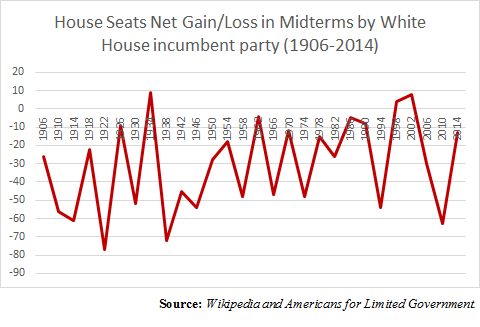“Our country needs a good ‘shutdown’ in September to fix [the] mess.”
That was President Donald Trump on Twitter May 2 explaining to the American people what it might take when the next continuing resolution comes up in September in order to achieve key administration objectives like building the border wall, defunding sanctuary cities and other 2016 campaign promises.
The tweet came as Congress settled on five months of funding for the remainder of Fiscal Year 2017, which ends Sept. 30. Now, Trump is promising to fight for these priorities when the next continuing resolution comes up.
But for Trump to succeed, he must be willing to issue a veto threat on these spending bills. And then, one-third of one chamber of Congress, it does not matter which, must be willing to sustain the President’s veto should he need to exercise it.
That can be said of the September continuing resolution. And the upcoming legislation on the debt ceiling. And if September only produces a 3-month continuing resolution, then the omnibus bill that comes in December after that.
These are must-pass pieces of legislation, without which non-essential government functions are closed. In the case of the debt ceiling coming due, there is an amount of prioritization of payments that must occur, including payments on interest owed, Social Security, Medicare, national security and for our veterans. It is up to the administration to carefully plan these scenarios out so that the White House keeps its leverage.
If through these votes, the President can count on one-third-plus-one-member of the House or Senate — 146 members of the House and/or 34 members of the Senate — to sustain any potential veto threat, then he will have the upper hand and a much larger seat at the table.
And so will Congressional Republicans, which is the key. They campaigned on many of these same priorities as well. If they stick with Trump on this, their clout grows. Then they can accomplish more on behalf of their constituents.
That was in part how President Ronald Reagan managed to get massive tax cuts and defense spending increases onto the books in the 1980s. His administration went through a total of eight partial government shutdowns.
Adding to that, Trump and his Congressional allies could promise that no non-defense, non-security, non-essential personnel will receive any back pay in the course of any government shutdown. This will create pressure from the federal workforce directed at, hopefully, Democrats who might be blocking, say, $12 to $15 billion for the border wall.
To which, there’s already some 600 miles of walls, fencing and other barriers on the southern border. What’s another 1,000 miles or so?
By keeping a potential shutdown on the table, Trump is sending the right signal to Congress, which even though Republicans have majorities in both chambers, that there is a line in the sand that cannot be crossed without pushback from the administration. This is a natural exercise of the separation of powers.
Now, if Republican members of Congress want Trump to succeed in his campaign promises — which will have a direct bearing on whether the GOP remains in the majority after 2018 — they have to rally to the President. There is no other way.
For President Trump to have a say on funding matters, he needs a sustainable veto. And since so many of the campaign promises require a spending bill of some sort, whether budget reconciliation or appropriations legislation or debt ceilings, to accomplish, that is what voters expect will happen.
In the 28 midterm elections dating back to 1906, the White House incumbent party lost seats on the House 89 percent of the time, with losses averaging about 35 seats — more than enough to unseat the GOP majority.
The exceptions were in 1934, 1998 and 2002. That’s it.
So, more likely than not, Republicans will lose House seats in 2018. The question is how many.
With that in mind, they had better accomplish as much as possible between now and then, so that the American people can give them their vote of confidence come Nov. 2018. Midterm losses tend to happen whether Congress was actively passing legislation or not accomplishing much of anything.
Congressional Republicans do not prove they can govern by capitulating to the minority party on all matters of funding, they prove they have no talent for governing as a majority should. Nobody who voted for Trump and Republican majorities cares if there was a bipartisan consensus on the continuing resolution.
That is not what drives midterm elections. Those are political base turnout affairs, and have to do with which party is fired up, and which one is not.
By telling Republican voters to go pound sand on critical priorities — yes, like the wall — Republicans in Congress are clearly signaling to that base they do not really care if they win elections.
Why should the base vote in 2018? Because although things can change going forward — there is a lot of time between now and September — right now the appearance is that Republicans are a majority in name only.
To turn this around, it is up to Trump to rally Congress to generate a credible veto threat and remind the GOP base the value of keeping — and expanding — the majority. Show the American people that elections really do matter.
Robert Romano is the senior editor of Americans for Limited Government.








